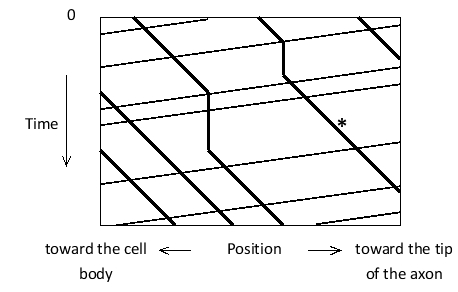Question 42
(Multiple Choice)
Using time-lapse fluorescence microscopy, you have recorded the transport of fluorescently labeled mitochondria in a region of an axon in a fruit-fly larva; you have plotted the results in the following graph, in which the vertical axis is time (from the top to the bottom), the horizontal axis is the position along the axon, and each trace represents one mitochondrion. Is the retrograde transport or the anterograde transport of mitochondria faster in these axons? Does the trace indicated by an asterisk correspond to a mitochondrion that was transported by a dynein or a kinesin? 
A) Anterograde; kinesin
B) Anterograde; dynein
C) Retrograde; kinesin
D) Retrograde; dynein
Answer